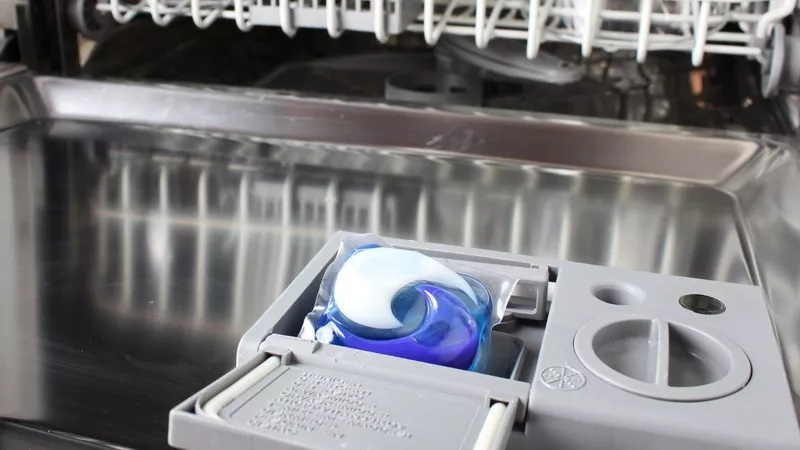Dongguan UFine Daily Chemical Co.,Ltd.
- All
- Product Name
- Product Keyword
- Product Model
- Product Summary
- Product Description
- Multi Field Search
Views: 222 Author: Tomorrow Publish Time: 10-26-2025 Origin: Site











Content Menu
● Safety and health considerations
● Alternatives to dishwasher pods
● Practical tips for safer and economical dishwashing
● FAQ
>> 1. Are dishwasher pods safer for households with children and pets?
>> 2. Do dishwasher pods dissolve well in hard water?
>> 3. Are powders more cost-effective than pods?
>> 4. Can I use pods in any dishwasher?
>> 5. Do pods harm the environment more than other detergents?
Dishwasher pods are popular for their convenience and powerful cleaning action. However, there are valid reasons some households choose to avoid them. This article analyzes concerns related to safety, environmental impact, pricing, and performance, and offers practical alternatives for achieving clean dishes without pods. The discussion includes real-world scenarios, common user experiences, and actionable tips to help readers make informed choices about dishwashing detergents.

Accidental ingestion risk
Pods are colorful, compact, and often deceptively appealing to children and pets. A single swallowed pod can cause irritation, coughing, and gagging, while larger exposures may lead to more serious gastrointestinal distress. The risk is not only ingestion; curious toddlers may squeeze or bite the pouch, releasing concentrated detergent that can burn lips, mouth, and throat.
Packaging hazards
The outer packaging and the pod's inner film pose choking hazards and exposure risks if accessed by small children or animals. If a pod is punctured, the liquid detergent can splash onto skin or eyes, causing irritation or chemical burns. Household spills during handling are a common cause of accidental exposure for caregivers and other household members.
Skin and eye irritation
Direct skin contact with concentrated dishwasher detergents can irritate the skin, leading to dermatitis in frequent users or those with sensitive skin. Eye exposure is particularly painful and may require medical attention or eye irrigation. Wearing gloves during handling can mitigate some of these risks, but it does not eliminate the potential for splashes.
Packaging waste
Pods are typically sold with plastic bottles or pouches and an outer carton, plus the film coating inside each pod. This packaging contributes to plastic waste and recycling challenges in many communities. While some brands offer recyclable packaging, the overall environmental footprint remains higher than simpler packaging options in many cases.
Chemical composition
Dishwasher pods contain surfactants, enzymes, brighteners, and fragrances. Some components may be less biodegradable or persist longer in aquatic environments. Wastewater treatment plants handle these substances differently depending on local infrastructure, which can influence ecosystem health downstream.
Concentration and handling
The compact, highly concentrated form of pods can tempt users to overpour in search of “more cleaning power.” Overuse increases the load of detergents entering the wastewater system, potentially affecting aquatic organisms and water quality. Additionally, concentrated formulations may persist in household plumbing, contributing to residue buildup in dispensers and plumbing over time.
Unit cost
On a per-load basis, dishwasher pods can be more expensive than traditional powders or liquids. The premium price is often tied to convenience and brand positioning, but the incremental cost can add up for families with high dish volume.
Wasteful usage
Pod dosing is fixed, which means you cannot adjust precisely for small or lightly soiled loads. If you run many small cycles, pods may lead to unnecessary detergent use or, conversely, insufficient cleaning for heavily soiled items if you run larger cycles with fewer pods.
Longevity of devices
Some users report dispenser residue or film buildup when pods are used repeatedly, especially if the dishwasher's dispensing system is not designed to handle the pod's coating or if the rinse cycle is not intended for such products. In some cases, this can lead to higher maintenance costs or more frequent service calls.
Water hardness variation
In areas with hard water, some pod formulations dissolve more slowly or less completely. Residue or mineral buildup on glassware, plates, or the dishwasher itself can occur, leading to a perception of reduced cleaning effectiveness.
Dose flexibility
Pods fix the amount of detergent per load, removing the option to tailor dosage to load size, soil level, or water hardness. For very small loads or lightly soiled items, a pod can be more detergent than needed; for heavily soiled cookware, a pod may be insufficient unless multiple pods are used, which undermines cost efficiency.
Compatibility with detergents
Pods are designed to work with specific rinse aids and water temperature ranges and may not perform optimally in all dishwasher models. Some users experience dispenser issues, film residue on dishes, or poor dissolution in certain cycles.

Powder detergents
Powders offer flexible dosing, enabling precise measurement for load size and soil level. They also typically have lower per-load costs and can be tailored to water hardness with appropriate dosing and booster products.
Liquid detergents
Liquids are easy to measure and can be pre-dissolved for pre-wash steps. They are generally inexpensive per load and allow customization for small or large cycles.
Tablets without inner film
Some brands now offer tablet formats without an inner plastic film. These can reduce the risk of film residue and potentially lower packaging waste, while preserving the convenience of tablets.
Soap boosters and additives
Enzyme-based boosters, rinse aids, and water-softening agents can improve cleaning performance, particularly in challenging water conditions or with heavily soiled dishes.
Read the manual
Always follow the dishwasher manufacturer's recommendations for detergent type and dosage. The ideal product and amount can vary by model, cycle, and temperature.
Consider water hardness
If you have hard water, choose detergents formulated for hard water or adjust dosing according to local guidelines. Water softeners or booster additives can help improve results without increasing waste.
Store detergents safely
Keep detergents out of reach of children and pets. Store in a cool, dry place away from heat sources to preserve efficacy and reduce degradation of packaging components.
Use the right amount
Aim for the minimum effective dose to reduce residue, protect the dishwasher's internal components, and minimize environmental impact. If you notice film on glassware, adjust the amount or switch formulations.
Regular maintenance
Clean the dishwasher filter, spray arms, and seals regularly. Proper maintenance can significantly improve cleaning performance and reduce the need for stronger detergents.
Pre-treat tough stains
For stubborn residues, pre-soak or pre-treat with a little detergent or a dedicated stain remover before loading the dishwasher, especially with greasy pots and pans.
Load wisely
Arrange dishes to maximize water exposure to the spray arms. Avoid overloading, which can hinder cleaning and force the dishwasher to run longer cycles.
Pods are always best
Effectiveness depends on the dishwasher, water quality, and load. Pods may not be the optimal choice for every situation or every model.
Pods are environmentally superior
While convenience is appealing, packaging, production, and concentrated chemicals can offset perceived environmental benefits. A full lifecycle assessment is needed to determine true environmental impact.
More detergent equals cleaner dishes
Excess detergent can create excessive foam and leave residue on dishes, countertops, and dishwasher components. Following manufacturer guidelines helps prevent this issue.
If safety is a priority
Opt for alternatives without inner film or with safer packaging designs, and store all detergents securely away from children and pets.
If cost matters
Calculate cost per load for each option, including the potential need for boosters or rinse aids. Bulk purchasing or choosing multi-load formats can reduce costs over time.
If environmental concerns guide choice
Look for biodegradable surfactants, minimal packaging, and products that encourage recycling. Consider concentrated formulas that reduce packaging weight and volume.
Dishwasher pods offer convenience but come with safety, environmental, economic, and performance considerations. By weighing these factors and exploring alternatives, households can select a cleaning approach that balances effectiveness with safety and cost. Consumers should periodically reassess their choices as products evolve, and remain mindful of children, pets, water quality, and maintenance practices to maintain optimal dishwashing outcomes.

Pods can pose ingestion and exposure risks; keep out of reach and store securely.
Dissolution can be slower in hard water, potentially reducing cleaning effectiveness; consider hard-water–friendly formulations or dosing adjustments.
Often, yes. Powders allow precise dosing, which can lower cost per load, depending on usage and brand pricing.
Most modern dishwashers support pods, but always check the manufacturer's recommendations for compatibility and dosage.
Environmental impact depends on packaging, formulation, and wastewater treatment; some alternatives may offer lower packaging waste or biodegradable components.